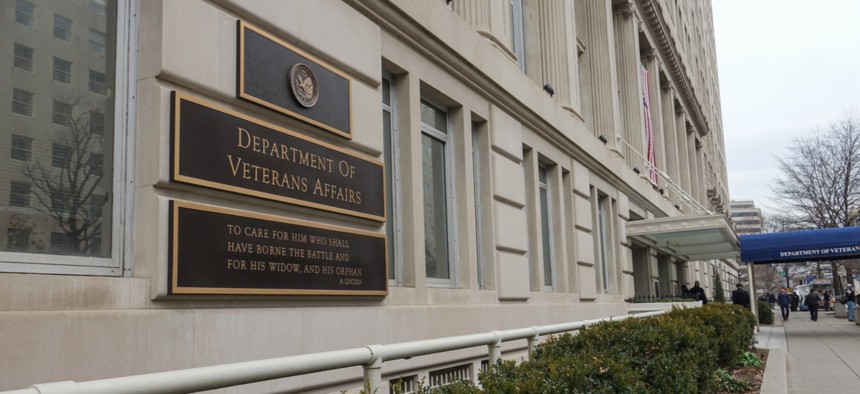Online Health Applications Increased 50 Percent After VA.gov Relaunch

Bakdc/Shutterstock
The newly redesigned homepage makes it easier for vets to use self-service tools, which will save the government money, according to the agency’s digital services chief.
By the time Marcy Jacobs came in with the champagne, the moment to celebrate had already passed. The Veterans Affairs Department main website, which she and her team had spent the last nine months thoroughly redesigning, was live, and the process had gone off without a hitch.
“It was so anticlimactic,” said Jacobs, who leads the U.S. Digital Service branch at Veterans Affairs. “There was no drama, there were no fireworks. It was the quietest launch you never heard about.”
The revamped VA.gov was intended to make it easier for veterans to access the agency’s most popular services, and the team is already seeing its efforts pay off, according to Chris Johnston, the program manager for the project.
Between the site’s relaunch on Nov. 7 and Jan. 16, veterans submitted 51 percent more online health care applications than they did during the same period the year before, Johnston told Nextgov. Applications for G.I. bill education benefits also increased 9 percent, and customer experience scores improved as well.
“In the private sector, if you did something that gave you a 50 percent boost overnight, you'd get a $1 million bonus and a month of vacation,” he said.
The metrics reflect a rare win for an organization plagued by an ever-expanding list of IT failures, troubled acquisitions and customer experience issues.
Prior to the redesign, Jacobs told Nextgov that the department’s online presence looked more like an organizational chart than public-facing resource. Veterans needed to navigate a maze of outdated websites to find what they looking for, and that information oftentimes was buried in bureaucratic descriptions of office missions and funding, she said.
The team analyzed data on how veterans were using each site and linked to the 20 most popular services—which account for some 80 percent of the agency’s web traffic—directly on the new homepage. Information on offices and operations are still available online, she said, but it’s no longer the first thing veterans see when they enter the site.
“It was looking at … what are people coming here to actually do,” she said. “Surprisingly they don’t come to read about the VA.”
The initial relaunch included 200 pages, and in the coming months, the team will begin rewriting, redesigning and merging some 200,000 other pages spread across the agency’s myriad websites. The ultimate goal is to winnow down sites to their most valuable content, and ensure information is presented in plain, understandable language, Jacobs said.
By improving its online presence, the department can nudge more veterans to use digital services instead of call centers and in-person visits, which would save the agency money, according to Johnston. And beyond streamlining websites, the team is already engaged in a number of efforts to improve those online offerings.
In late January, the agency launched a digital tool that would guide veterans through the claims process. Some 70 percent of the department’s 1.2 million annual claims are submitted on paper, Jacobs said, so helping vets file online would cut down the workload for agency employees.
Her team is also testing a tool that would allow vets to update their personal information online and check their benefits status, Jacobs said, and she plans to start exploring ways to use existing data to reduce the number of forms vets must fill out for various services.
“We fixed the first thing that a veteran needs to interact with, now we fix the next thing that makes this full service better,” she said. “All of these things have trickle-down effects.”
NEXT STORY: Get Ready for the Pentagon’s Big Cloud Buy






